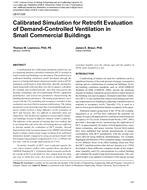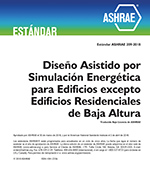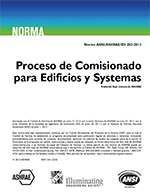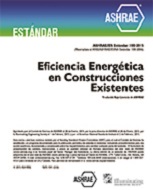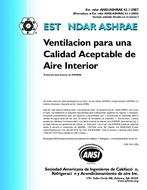Description
A methodology for calibrating simulation models for use in evaluating demand-controlled ventilation (DCV) retrofits in small commercial buildings was developed. The method uses a calibrated building simulation model developed through the process of tuning individual component models (such as HVAC equipment performance) from field data. Specific parameters tuned using field-collected data were the occupancy schedules for weekday and weekend periods, ones that characterize the heating, ventilating, and air-conditioning (HVAC) equipment performance, and several key parameters characterizing the building thermal performance. The tuning of parameters associated with the CO2 modeling and occupancy included in this evaluation was described in separate publications. The tuning parameters were chosen because they were found through parametric studies to have a large influence on the economics of DCV and because they are difficult to determine from site inspections. The method was applied to several small commercial buildings located in different climates within California. The influence of the amount of training data was studied, and it was found that only a few days of training data are sufficient to develop models for evaluation of DCV retrofits. Overall improvement in the root mean square error (RMSE) of predicted hourly cooling system energy usage resulting from calibrated simulation models compared to using an untuned model with best engineering estimates ranged from 0.13 to 1.2 kWh for the test sites, with an average improvement of 27.6%.
Economic benefits of DCV were evaluated against the case where outdoor airflow rates equaled those specified in ASHRAE Standard 62.1. Estimated simple economic paybacks for retrofit of DCV at the field test sites ranged from less than one year to about five years. Key factors in determining the economic benefits were the climate type and the number of HVAC units installed at a site.
Units: Dual
Citation: ASHRAE Transactions, vol. 113, pt. 2
Product Details
- Published:
- 2007
- Number of Pages:
- 14
- File Size:
- 1 file , 1.3 MB
- Product Code(s):
- D-LB-07-026
